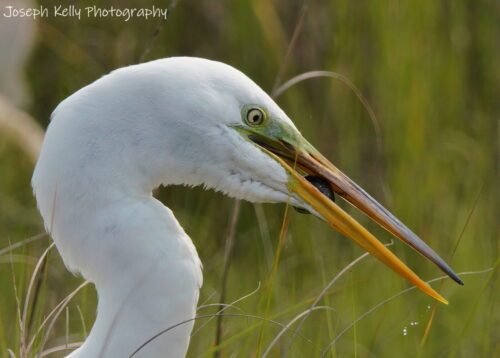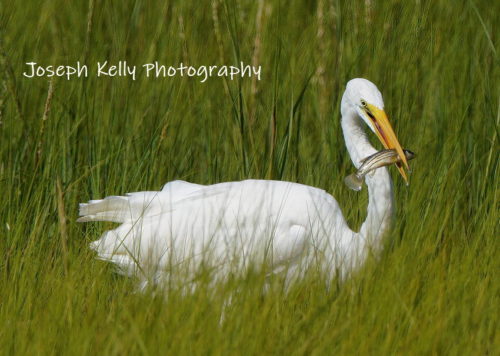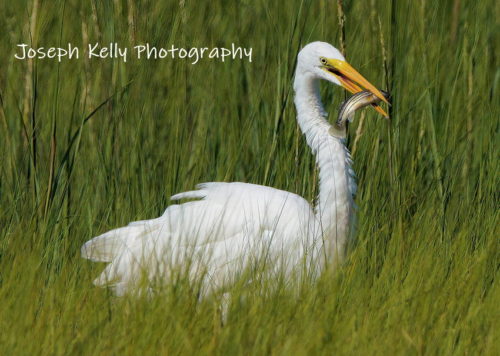Wednesday, June 21 2023,
First off, the title of this post is a bit of a misnomer, although, not in its entirety. Yes, this Mummichog is having a bad day. That’s entirely true. However, it is also experiencing its last day. And, unless you’re an amoeba or a jellyfish, we’re all gonna be there someday. On the upside, this hapless fish was taken by what might have seemed a giant angel, clad in white with great broad wings. I make no judgements here. In fact, perhaps, all of us should be taking a closer look at our angels. Just a thought.
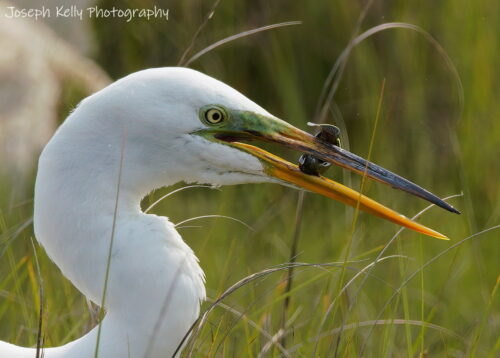 Secondly, this may be one of those posts in which you might learn something. So, if you’re a young scholar, or, even, a teacher who is celebrating the end of the school year, you may want to skip this post. I understand. Why should you be subjected to gaining knowledge for the simple sake of gaining knowledge. It’s a slippery slope. You learn one thing, and, maybe, it makes you curious about something else. It’s not right. The school year has ended, and yet, you’re still learning stuff. Curiosity is a dangerous thing. Look what it did for the cat. To this day, I still read two books, (or more), at a time. Be afraid, dear readers, be afraid.
Secondly, this may be one of those posts in which you might learn something. So, if you’re a young scholar, or, even, a teacher who is celebrating the end of the school year, you may want to skip this post. I understand. Why should you be subjected to gaining knowledge for the simple sake of gaining knowledge. It’s a slippery slope. You learn one thing, and, maybe, it makes you curious about something else. It’s not right. The school year has ended, and yet, you’re still learning stuff. Curiosity is a dangerous thing. Look what it did for the cat. To this day, I still read two books, (or more), at a time. Be afraid, dear readers, be afraid.
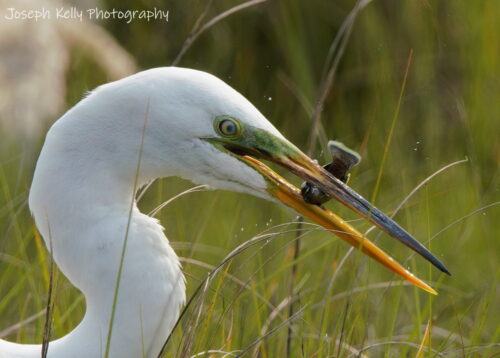 So. You’re still here, even after my warning. I’m guessing most of you never paid much attention to your parents, either. Neither did I, but I grew up playing in the woods. Allow me to draw your focus to the above photo. Do you see that “cloudy” eye? That’s not faulty photography or a physical defect. Most birds, as well as several amphibians, reptiles, and even some mammals, have a nictitating membrane, or a third eyelid, if you will. For the birds, it largely serves as an extra protection to their eyes while hunting, and that is exactly what is happening here.
So. You’re still here, even after my warning. I’m guessing most of you never paid much attention to your parents, either. Neither did I, but I grew up playing in the woods. Allow me to draw your focus to the above photo. Do you see that “cloudy” eye? That’s not faulty photography or a physical defect. Most birds, as well as several amphibians, reptiles, and even some mammals, have a nictitating membrane, or a third eyelid, if you will. For the birds, it largely serves as an extra protection to their eyes while hunting, and that is exactly what is happening here.
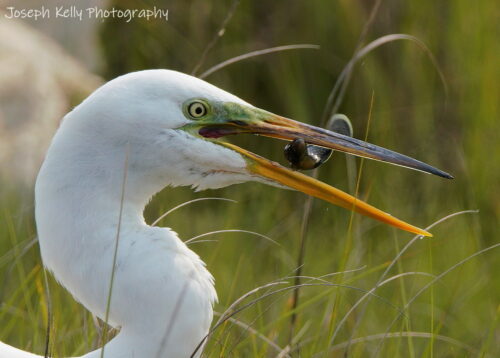 Now, let’s discuss the fish, the magnificent Mummichog. These fish are even cooler than their name. Concerning that name, the term Mummichog comes from a Narragansett Indian word meaning “going in crowds”, which was a reference to the Mummichog’s habit of swimming in large schools. Mummichogs are an extremely hardy fish. These amazing fish can withstand great changes in salinity, from freshwater to saltwater, as well as a considerable range of temperatures, not to mention an amazingly high threshold for pollution. These attributes make Mummichogs a favorite of scientific studies. In fact, Mumichogs were the first fish in space. No lie. In 1973, two Mumichogs, and fifty Mummichog eggs, were sent to Skylab. Forty-eight of those eggs hatched, and behaved normally. In space, no less. How cool is that? Again, this is an incredible fish. However, as these photos show, they are no match for Great Egrets. Sigh.
Now, let’s discuss the fish, the magnificent Mummichog. These fish are even cooler than their name. Concerning that name, the term Mummichog comes from a Narragansett Indian word meaning “going in crowds”, which was a reference to the Mummichog’s habit of swimming in large schools. Mummichogs are an extremely hardy fish. These amazing fish can withstand great changes in salinity, from freshwater to saltwater, as well as a considerable range of temperatures, not to mention an amazingly high threshold for pollution. These attributes make Mummichogs a favorite of scientific studies. In fact, Mumichogs were the first fish in space. No lie. In 1973, two Mumichogs, and fifty Mummichog eggs, were sent to Skylab. Forty-eight of those eggs hatched, and behaved normally. In space, no less. How cool is that? Again, this is an incredible fish. However, as these photos show, they are no match for Great Egrets. Sigh.
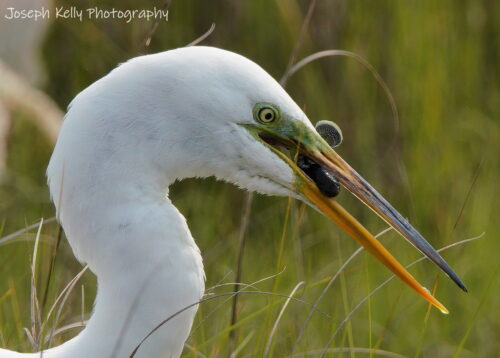 It takes a village to raise a child. It takes even more folks to make me appear intelligent. I would never have been able to share these facts with you without the help of my friend Michael Farina. Mike is a Conservation Biologist at the Marine Nature Study Area in Oceanside. Many has been the times when he has identified birds or fish for me. It was Mike who identified this fish as a Mummichog. Not only that, after I did some reading on this fascinating species of fish, it was Mike who confirmed my guess that this was a male Mumichog. Mr. Farina is one very helpful and knowledgeable man.
It takes a village to raise a child. It takes even more folks to make me appear intelligent. I would never have been able to share these facts with you without the help of my friend Michael Farina. Mike is a Conservation Biologist at the Marine Nature Study Area in Oceanside. Many has been the times when he has identified birds or fish for me. It was Mike who identified this fish as a Mummichog. Not only that, after I did some reading on this fascinating species of fish, it was Mike who confirmed my guess that this was a male Mumichog. Mr. Farina is one very helpful and knowledgeable man.

